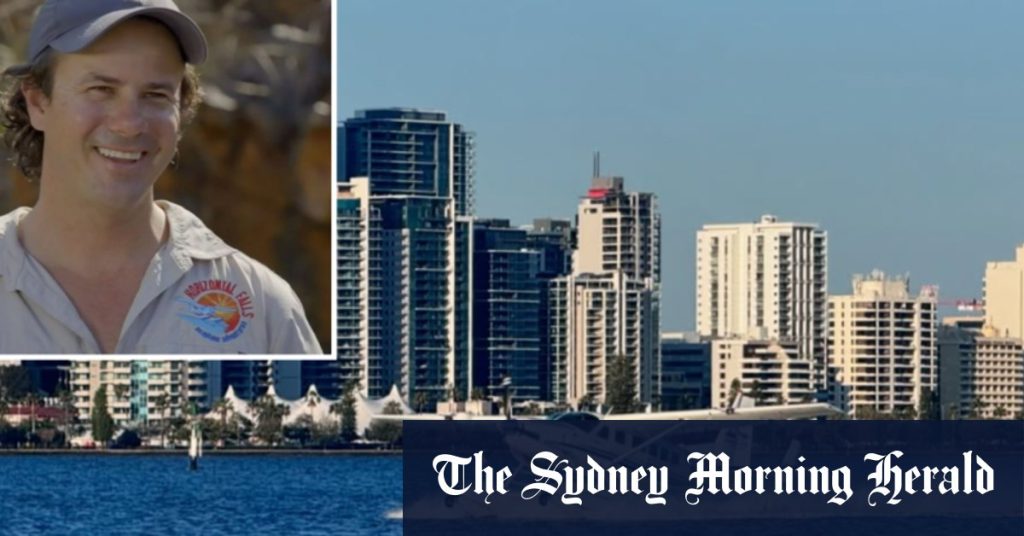The tragic seaplane crash off Rottnest Island sent shockwaves through Western Australia, prompting immediate responses from authorities and the operating company, Swan River Seaplanes. Company representatives expressed profound sorrow for the families involved and emphasized their commitment to supporting both those affected and the ongoing investigation. The incident, involving a Cessna 208 Caravan, occurred merely a week after the aircraft commenced operations in WA. Swan River Seaplanes, described as a small, family-run business, held a unique position as the sole aviation operator offering scenic flights departing from Perth city, serving Rottnest Island and various southwest destinations. The company’s close ties to the state government, including its tourism agency promoting its services and the appointment of its managing director, Shirley Bailey, as Tourism WA commissioner, added another layer of complexity to the unfolding situation.
Premier Roger Cook confirmed that no government official had communicated with Bailey following the tragedy, underscoring the administration’s focus on the investigation’s progress. He acknowledged the preliminary nature of the inquiry, relying on police reports and anticipating briefings from various departments, including Transport and the Rottnest Island Authority. The government’s response to the incident, particularly regarding its continued promotion of Swan River Seaplanes on its tourism platforms, remains under scrutiny. Tourism Minister Rita Saffioti stated that any decision regarding the removal of company advertising would be contingent upon the findings of the expert investigation. This stance reflected the government’s cautious approach, prioritizing the thorough examination of all contributing factors before enacting any policy changes.
The Rottnest Island incident joins a somber list of aviation tragedies in Western Australia’s history. Among the most poignant is the 2017 Australia Day airshow crash, witnessed by thousands, which claimed the lives of pilot Peter Lynch and his partner Endah Cakrawati. Their Grumman G-73 Mallard flying boat tragically disintegrated mid-flight, plunging into the Swan River. This public tragedy left a deep scar on the community, highlighting the inherent risks associated with aviation, especially during public displays. More recently, the aviation community mourned the loss of Simon Carrell, whose de Havilland Chipmunk crashed at Jandakot Airport in 2024. These incidents, though distinct in their circumstances, underscore the ever-present need for rigorous safety protocols and thorough investigations to prevent future occurrences.
Adding to the list of aviation incidents, the 2023 crash of a Boeing 737 water tanker battling a bushfire in Fitzgerald River National Park serves as a critical reminder of the dangers faced by aerial firefighters. Remarkably, the two pilots involved survived with minor injuries, offering a glimmer of hope amidst the wreckage. The subsequent investigation and recommendations for minimum drop heights for water bombers highlighted crucial safety considerations in aerial firefighting operations. Each incident, from the recent seaplane tragedy to the 2017 airshow disaster and the 2023 water tanker crash, has contributed to a growing understanding of aviation safety and the importance of continuous improvements in procedures and regulations.
The seaplane crash off Rottnest Island, while devastating, also offers an opportunity for critical reflection on the aviation industry’s safety practices. The proximity to a popular tourist destination and the involvement of a company with strong government ties necessitate a transparent and comprehensive investigation. The investigation’s findings will not only shed light on the specific circumstances of this tragedy but also inform future safety protocols and potentially lead to policy changes. This thorough examination is crucial for maintaining public confidence in aviation safety and ensuring the well-being of both passengers and crew.
Beyond the immediate investigation, the Rottnest Island tragedy calls for a broader discussion about the balance between promoting tourism and ensuring safety in the aviation sector. The government’s role in both regulating the industry and promoting its services through tourism agencies requires careful consideration. The incident underscores the need for a robust framework that prioritizes passenger safety without stifling the growth of the tourism industry. This delicate balance requires ongoing dialogue between government, industry stakeholders, and the public to foster a culture of safety and accountability in the skies above Western Australia.

